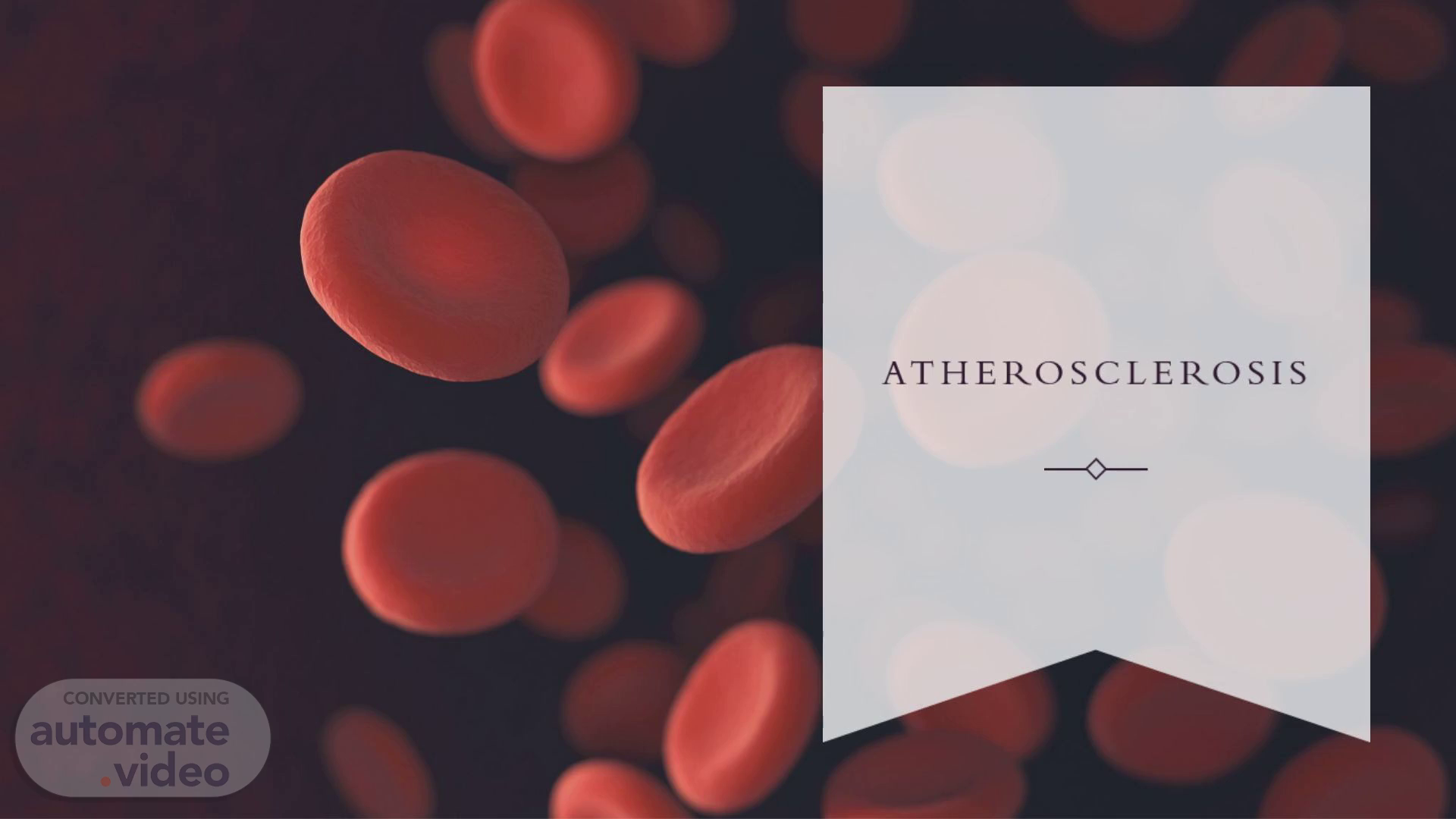Scene 1 (0s)
Red blood cells suspended in mid-air. Atherosclerosis.
Scene 2 (8s)
Etiology(Causes). if there's too much cholesterol in the blood, the cholesterol and other substances may form deposits called plaque. Plaque can cause an artery to become narrowed or blocked. If a plaque ruptures, a blood clot can form. Plaque and blood clots can reduce blood flow through an artery..
Scene 3 (25s)
Symptoms. Symptoms of atherosclerosis depend on which artery is affected. For example: Chest pain during activity. Deep, aching pain in the abdomen or back. Painful muscle cramps in your hips or legs. Transient ischemic attack (TIA).Also called a “mini stroke”..
Scene 4 (42s)
Risk Factors. High cholesterol and triglyceride levels High blood pressure Smoking Diabetes Obesity Physical inactivity High saturated fat diet A family history of early heart disease An unhealthy diet.
Scene 5 (55s)
Treatments. Lifestyle changes: Choose heart-healthy foods Be physically active. Get enough sleep. Aim for a healthy weight. Manage stress.
Scene 6 (1m 26s)
Diagnostic Test. Blood Tests Chest X Ray EKG (Electrocardiogram) Angiography.
Scene 7 (1m 34s)
Picture. Atherosclerosis | Johns Hopkins Medicine.
Scene 8 (1m 43s)
Interesting facts. Atherosclerosis is a major cause of coronary artery disease (CAD) Atherosclerosis can lead to heart attacks Atherosclerosis contributes to other cardiovascular conditions like strokes and peripheral artery disease Inflammation plays a big part in the progression atherosclerosis atherosclerosis can progress for years without causing noticeable symptoms.
Scene 9 (1m 58s)
https://www.mayoclinic.org/ https://www.hopkinsmedicine.org/.
